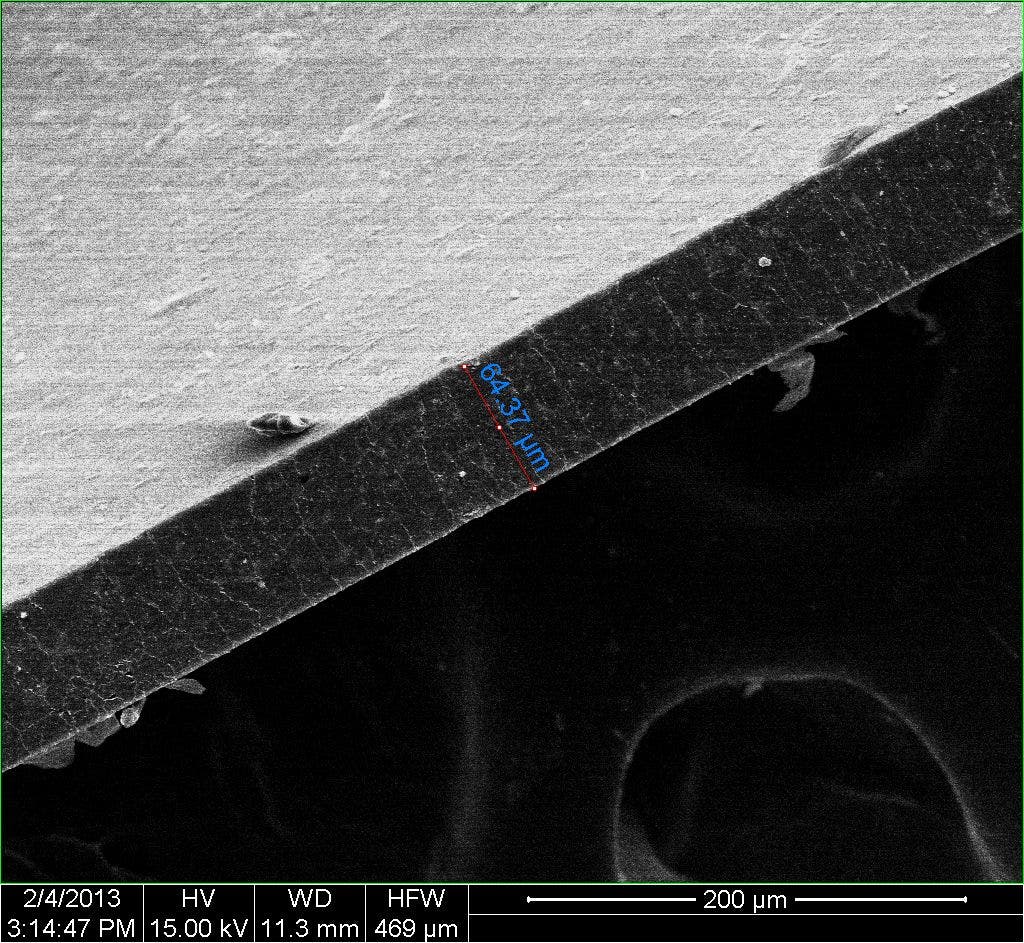Scientists at Rice University have developed a method that combined graphene nanoribbons (GNRs) and a polymer to produce a lightweight storage medium for compressed gas. The resulting material may prove to be extremely useful in the auto industry where manufacturers are trying use compressed natural gas to its fullest potential or in the beverage industry where it could help beer or carbonated drinks stay fresh for far longer on the shelf.
Typically, compressed natural gas is stored in bulky metal containers that are really thick , and thus heavy, in order to keep the gas from escaping (too soon). The Rice University chemists combined single-atom-thick graphene nanoribbons (GNRs) to thermoplastic polyurethane (TPU) – a block copolymer of polyurethane that combines hard and soft materials – to produce an enhanced a polymer that is far more impermeable to pressurized gas and far lighter than the metal in tanks. According to the researchers, the resulting polymer is as 1,000 times more effective at trapping compressed natural gas.
The GNRs were subsequently treated with hexadecane before being combined, and the resulting polymer is only 0.5% heavier as a result of the GNRs layering, for a tremendous increase in impermeability, due to the ribbons’ even dispersion through the material.

The researchers tested the GNR/TPU films dispersed with 200-300 nanometer-wide ribbons by putting pressurized nitrogen on one side and a vacuum on the other side. For films with no GNRs, the pressure dropped to zero in about 100 seconds as nitrogen escaped into the vacuum chamber. With GNRs at 0.5 percent, the pressure didn’t budge over 1,000 seconds, and it dropped only slightly over more than 18 hours.
“The idea is to increase the toughness of the tank and make it impermeable to gas,” said Rice lab of chemist James Tour. “This becomes increasingly important as automakers think about powering cars with natural gas. Metal tanks that can handle natural gas under pressure are often much heavier than the automakers would like.”
Auto applications aren’t the only ones that could benefit from the enhanced polymer, since it could solve a number of longstading problems in the food packaging industry as well.
“Remember when you were a kid, you’d get a balloon and it would be wilted the next day? That’s because gas molecules go through rubber or plastic,” Tour said. “It took years for scientists to figure out how to make a plastic bottle for soda. Once, you couldn’t get a carbonated drink in anything but a glass bottle, until they figured out how to modify plastic to contain the carbon dioxide bubbles. And even now, bottled soda goes flat after a period of months.
“Beer has a bigger problem and, in some ways, it’s the reverse problem,” he said. “Oxygen molecules get in through plastic and make the beer go bad.” Bottles that are effectively impermeable could lead to brew that stays fresh on the shelf for far longer, Tour said.
The scientists reported their results this week in the online edition of the American Chemistry Society journal ACS Nano.






